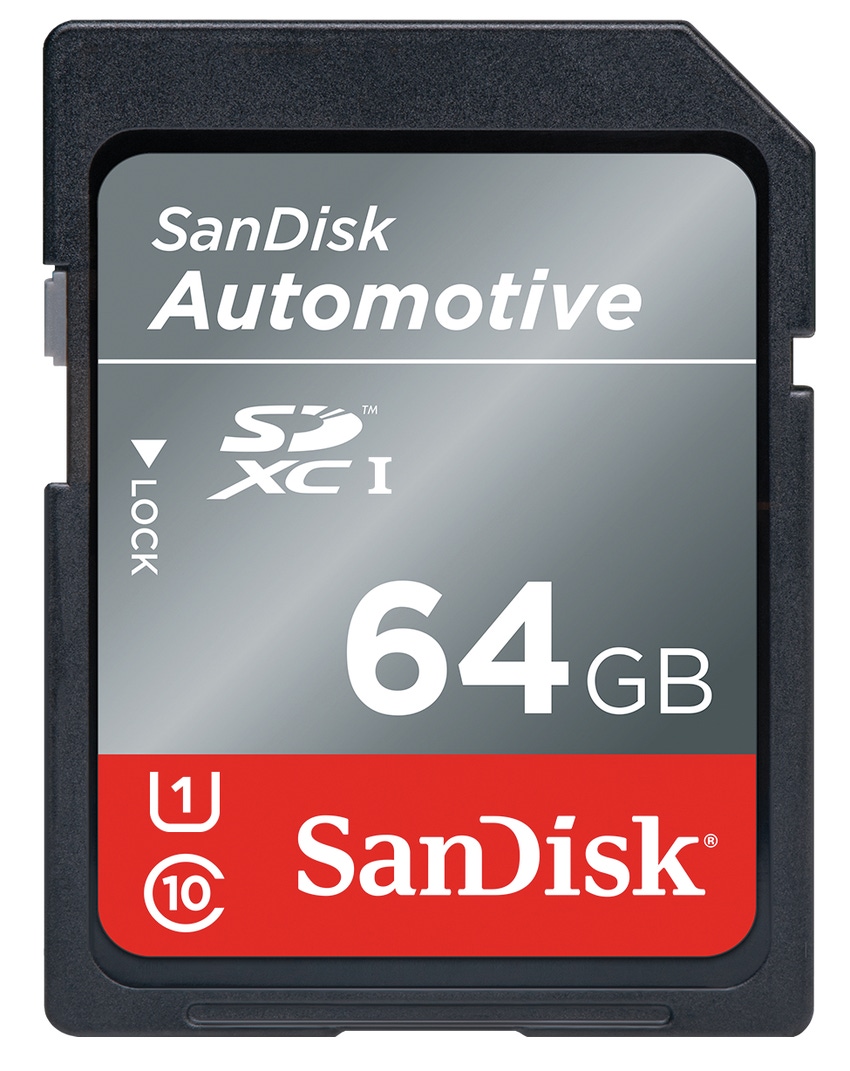Ruggedized, High-Performance Storage Cards Target New Use Cases
Faster read- and write-speeds fill emerging needs in automotive navigation, surveillance and drones.
October 20, 2017

Western Digital Corp. has rolled out new high-capacity data storage cards with faster read- and write-speeds to meet new use cases in automotive, as well as in drones, surveillance cameras, and myriad industrial applications.
The new SanDisk Automotive and SanDisk Industrial cards are targeted at a growing cadre of applications that require local intelligence. “We’re moving from storage being mainly read from, to applications where storage is also being written to,” Oded Sagee, director of product marketing for embedded and integrated solutions at Western Digital Corp. “It’s not just a matter of more data – it’s about changes in the use cases.”
|
New SanDisk Automotive SD card features read-speeds of up to 80 MB/s and write-speeds to 50 MB/s. (Source: Western Digital Corp.) |
The new use cases are especially prevalent in the auto industry, where engineers are trying to move intelligence to on-board locales. Newer navigation systems, for example, increasingly need to capture data from sensors and add it to on-board maps. In contrast, earlier navigation systems used maps mostly on a read-only basis, Sagee said. “When you go to semi-autonomous and autonomous cars, your database of high-definition maps has to get updated over time,” he told us. “So you have to make changes in the technology to meet these new, emerging applications.”
To meet those needs, the new storage cards offer four times the read speed (80 MB/s) and twice the write speed (50 MB/s) of predecessors at storage capacities ranging from 64 GB to 128 GB. The cards are also compliant with automotive standards calling for operating temperature ranges of -40°C to 85°C.
The automotive applications go beyond navigation, however. Data recorders (sometimes known as “black boxes”), dash cameras, diagnostic systems, and autonomous features are increasingly capturing sensor data and storing it on board, Sagee said. “Today, a lot of these devices use compute analytics in the cloud,” he told us. “But as they become smarter and make more real-time decisions, they can no longer rely on the cloud. So they make decisions locally – local compute, local storage.”
The higher performance and wider temperature ranges are also applicable to non-automotive applications, such as surveillance cameras. That’s a departure from the past, where surveillance cameras typically stored data in centralized locations such as a data center, using local storage only as a back-up. “But cameras are becoming more sophisticated,” Sagee said. “They can detect events and trigger decisions, so now the local card storage becomes a database.”
Similarly, drones and point-of-sale machines are increasingly moving toward local storage, Sagee added.
The new industrial cards will be available in October in SD and microSD formats, while the automotive cards will be offered in an SD format. All will include extended temperature ranges.
The goal is to combine higher read- and write-times with ruggedized performance. “It’s for IoT -- automotive, drones, surveillance – that need more reliability than a consumer product,” Sagee said. “We’re targeting the emerging use cases that we’re seeing in the market.”
Senior technical editor Chuck Murray has been writing about technology for 33 years. He joined Design News in 1987, and has covered electronics, automation, fluid power, and auto.
|
About the Author(s)
You May Also Like



.jpg?width=300&auto=webp&quality=80&disable=upscale)

